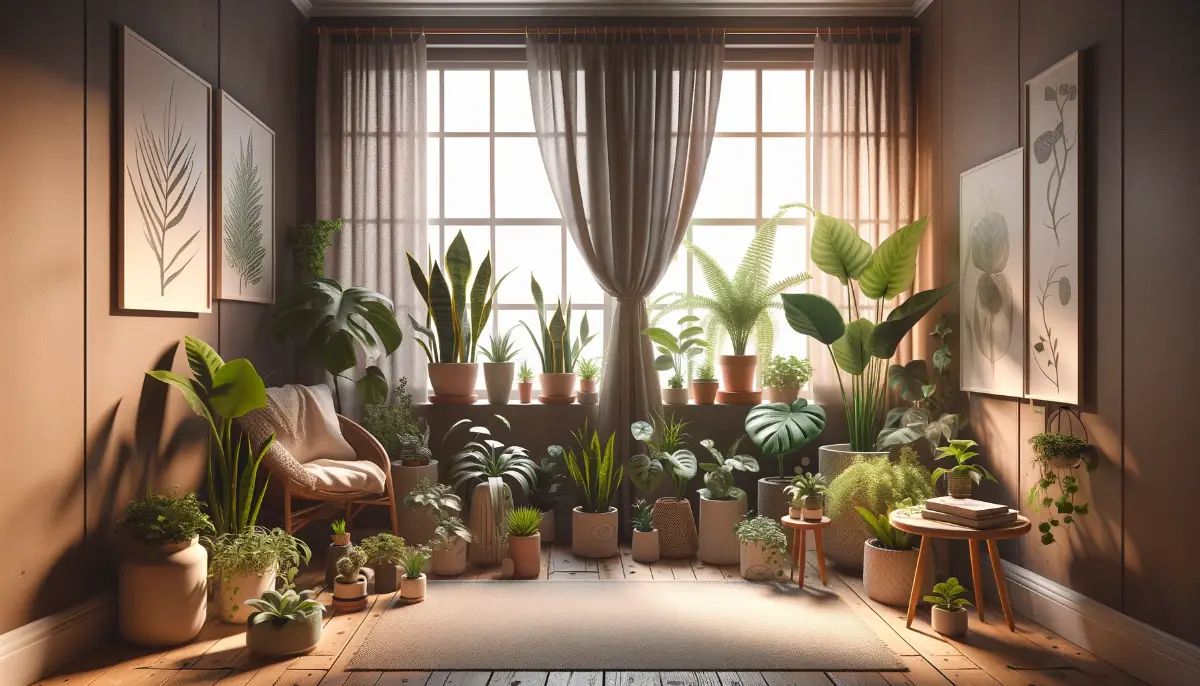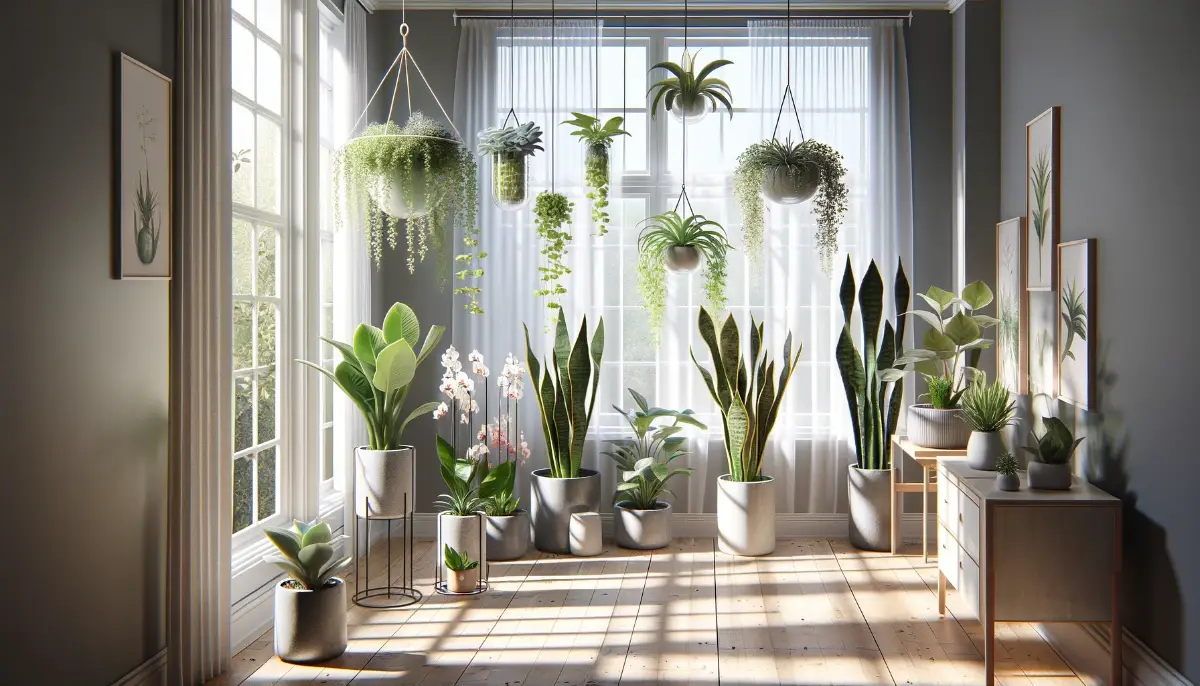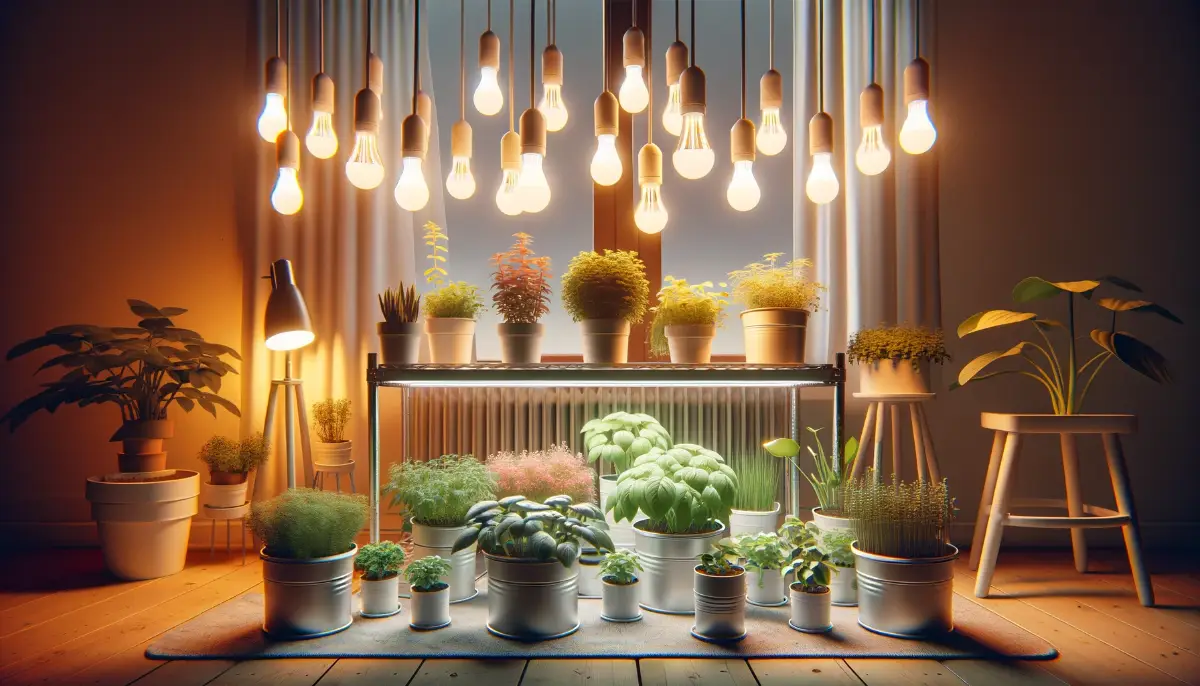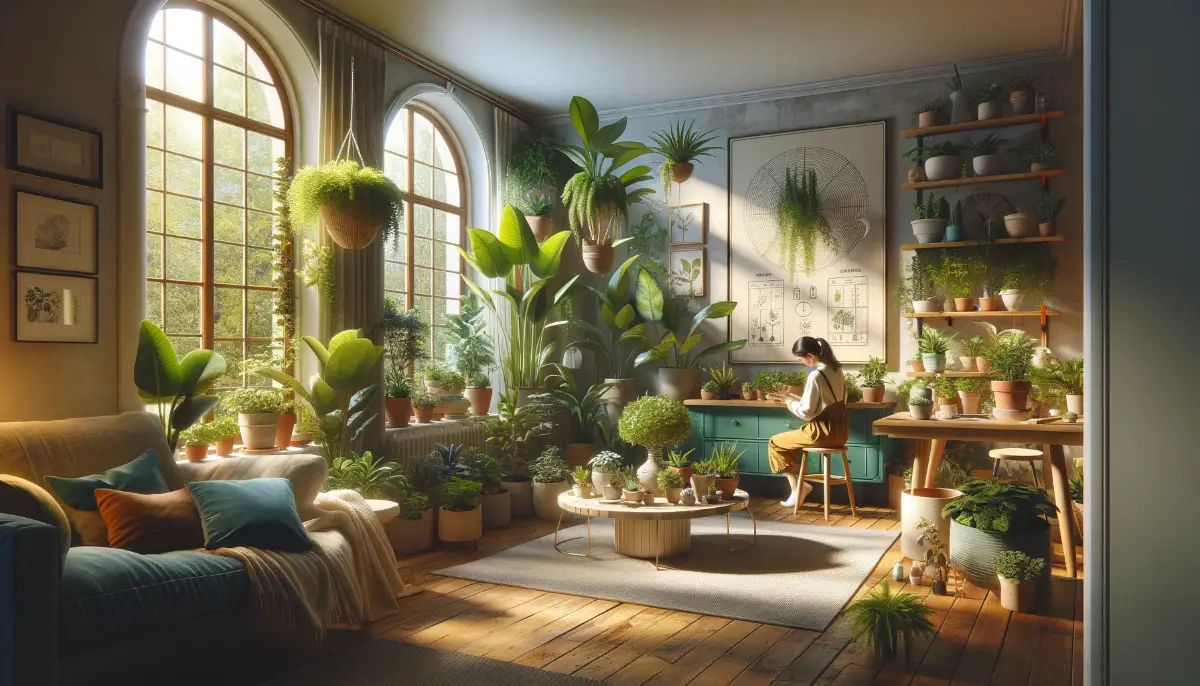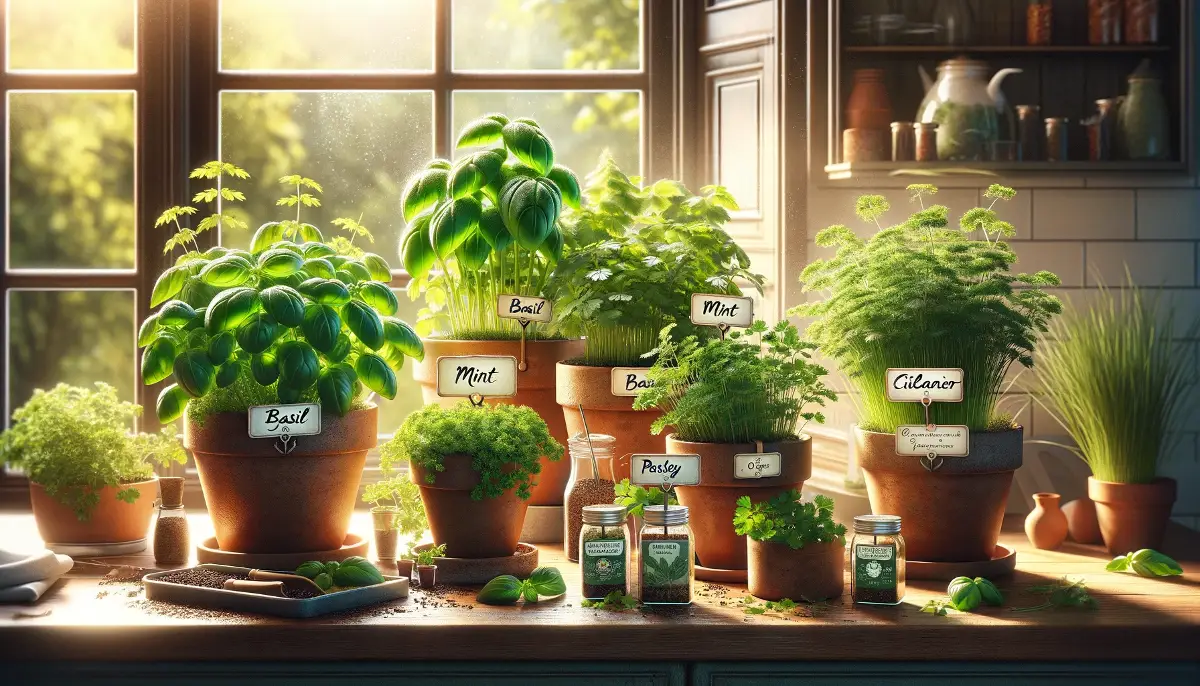Growing indoor plants in dark rooms not only beautifies your space but also brings a host of benefits to your living environment.
From purifying the air to enhancing your mood, the advantages of cultivating these resilient plants are many.
Here’s a look at some popular plants that thrive in low light conditions, along with their specific benefits and care tips.
Snake Plant (Sansevieria)
Advantages:
- Air purification: Snake plants are renowned for their ability to filter indoor air, even at night, by converting CO2 into oxygen.
- Low maintenance: Requires minimal watering and can survive in low light conditions.
Care Tips:
- Water sparingly, allowing the soil to dry out between waterings.
- Place in indirect light for best growth but will tolerate dark corners.
Cast Iron Plant (Aspidistra elatior)
Advantages:
- Durability: True to its name, it’s nearly indestructible and can withstand a range of conditions from low light to neglect.
- Air quality: Helps in improving the indoor air quality by removing toxins.
Care Tips:
- Keep soil evenly moist but not soggy.
- Thrives in low to moderate light; avoid direct sunlight.
ZZ Plant (Zamioculcas zamiifolia)
Advantages:
- Aesthetic appeal: Its glossy leaves bring a touch of elegance to any space.
- Drought tolerant: The ZZ plant stores water in its roots, making it incredibly resilient during dry spells.
Care Tips:
- Water when the top inch of soil is dry.
- Prefers low indirect light but can adapt to a variety of lighting conditions.
Peace Lily (Spathiphyllum)
Advantages:
- Blooms indoors: One of the few plants that can flower in low light conditions.
- Air purifying: Known to remove toxins such as formaldehyde from the air.
Care Tips:
- Keep the soil moist but not waterlogged.
- Bright, indirect light is preferred for blooming, but it can survive in darker areas.
Bird’s Nest Fern (Asplenium nidus)
Advantages:
- Humidity lover: Adds moisture to dry indoor air, beneficial during winter months.
- Unique appearance: Its ripple-edged fronds add texture and interest.
Care Tips:
- Prefers humid conditions; mist regularly.
- Thrives in low light but can tolerate some indirect sunlight.
Japanese Aralia (Fatsia japonica)
Advantages:
- Large leaves: Makes a bold statement in any room with its large, glossy leaves.
- Temperature tolerant: Can survive in cooler temperatures, perfect for less insulated spaces.
Care Tips:
- Keep the soil consistently moist.
- Prefers partial shade; too much light can scorch its leaves.
Heartleaf Philodendron
Advantages:
- Fast-growing: A vining plant that can quickly fill a space with greenery.
- Easy propagation: Simple to propagate from cuttings to expand your plant collection.
Care Tips:
- Water when the top inch of soil is dry.
- Thrives in moderate to low light; avoid direct sunlight.
English Ivy (Hedera helix)
Advantages:
- Air purifying: Known for its ability to filter airborne toxins.
- Versatile: Can be grown as a trailing or climbing plant, adding to its decorative appeal.
Care Tips:
- Prefers moist soil and cooler temperatures.
- Does well in low to moderate light conditions.
Spider Plant (Chlorophytum comosum)
Advantages:
- Easy to care for: An ideal choice for beginners.
- Offsets: Produces baby plants that can be easily propagated.
Care Tips:
- Water moderately, allowing the soil to dry out slightly between waterings.
- Bright, indirect light is best, but it can tolerate lower light levels.
Kentia Palm (Howea forsteriana)
Advantages:
- Elegant appearance: Brings a tropical feel to any room.
- Air purification: Contributes to cleaner indoor air.
Care Tips:
- Keep the soil lightly moist.
- Prefers indirect light but can tolerate low light conditions.
Growing plants in dark rooms not only challenges conventional gardening wisdom but also brings a lush, vibrant touch to spaces that otherwise might seem gloomy. With the right care, these plants can flourish, enhancing your home with their unique beauty and various health benefits.
FAQs for 10 Low-Light Loving Plants
How often should I water plants in dark rooms?
Water less frequently than plants in brighter spaces, as lower light levels slow down the evaporation process.
Can these plants survive with no natural light at all?
While they can survive in very low light, all plants benefit from some natural light. Consider artificial grow lights for completely dark rooms.
Do these plants require fertilizer?
Yes, but less frequently. Fertilize during the growing season with a balanced, diluted fertilizer.
How can I increase humidity for humidity-loving plants?
Use a humidifier, place a water tray near the plant, or mist the leaves regularly.
What are the signs of overwatering?
Yellowing leaves, soggy soil, and root rot are common signs of overwatering.
Can I use artificial light for my indoor plants?
Yes, fluorescent or LED grow lights can supplement or replace natural light for plants.
How do I know if my plant is getting too much light?
Signs include scorched leaves, faded colors, and dry, brittle edges.
What is the best temperature for these plants?
Most prefer average room temperatures (65-75°F or 18-24°C). Avoid placing near drafts or heating vents.
How can I tell if my plant needs water?
Check the top inch of soil; if it’s dry, it’s time to water. Drooping leaves can also indicate thirst.
Can these plants improve indoor air quality?
Yes, many indoor plants, including those listed, have been shown to filter harmful toxins from the air.

